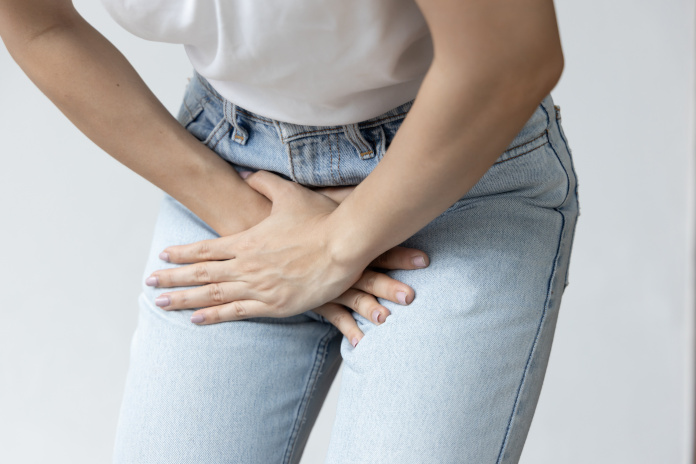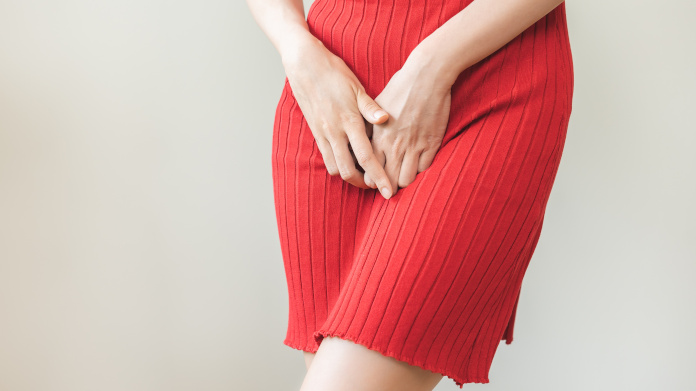Vaginal probiotics: which one should you choose to protect your intimate flora?
Are you looking for the best possible probiotic for maintaining healthy vaginal flora? Find out how to care for this particular microbiome which, though less well-known, is nonetheless crucial for good female intimate health

What exactly is the vaginal microbiome?
The vaginal microbiome is the collective term for all the microorganisms that live in the vagina. In simple terms, it’s as important to intimate health as the gut microbiota is to intestinal health!
Its function is two-fold: to defend the vaginal mucosa from pathogens by protecting it with a biofilm, and to maintain its pH within an ideal range (between 3.5 and 4.5) (1).
A guarantee of good vaginal health, this important ecosystem is, however, sometimes subject to imbalances, referred to as dysbiosis. This is usually caused by hormonal or environmental factors such as certain medications, stress, fatigue or inappropriate intimate hygiene (2).
In allowing particular bacterial strains to ‘get the upper hand’, vaginal dysbiosis paves the way for the development of gynaecological or urinary tract problems (3). When such problems become recurrent, they can cause significant genital discomfort and adversely affect a woman’s sex life.
The healthy microorganisms that populate the vaginal flora
200: that’s the approximate number of different species of bacteria so far identified in the vagina (4). But a closer look shows that a healthy vaginal microbiota displays far less diversity.
Here, it’s lactic bacteria (lactobacilli) which form the overwhelming bulk of its composition - almost 90%. This defensive battalion is what’s referred to as Döderlein flora.
While every profile is unique, most women will have between one and four dominant strains from among the following: Lactobacillus jensenii, Lactobacillus gasseri, Lactobacillus crispatus and Lactobacillus iners (5).
Other beneficial lactic colonisers include L. acidophilus, L. casei, L. Plantarum, L. rhamnosus and L. salivarius, which are also found in other regions of the body (such as the mouth and digestive tract) (6).
It’s worth noting that vaginal flora composition depends heavily on estrogen secretions (7). It can therefore vary significantly across the menstrual cycle, and during pregnancy and the menopause.
Which vaginal probiotic should you choose?
The purpose of a vaginal probiotic is to ‘re-seed’ the physiological flora with friendly microorganisms in order to restore a harmonious environment.
For optimal efficacy, you therefore need to focus on the above-mentioned lactobacilli. Other species of lactic bacteria such as bifidobacteria (used in yogurt fermentation) are also able to anchor themselves to the vaginal wall, and deserve a place in your microbiotic regimen (8).
While choosing the right bacteria is crucial, it’s equally important that they successfully implant themselves in the mucosa. To facilitate this tricky process, we recommend opting for a formulation that contains prebiotics, substances that nourish and support the growth of healthy bacteria (9).
Finally, there are two ways in which vaginal probiotics can be administered: the vaginal route (pessaries) or the traditional oral route (capsules, tablets …). The first is more direct, the second less restrictive. It’s all down to personal choice.
Combining 5 recognized strains of lactic bacteria (Lactobacillus rhamnosus, Bifidobacterium lactis, Lactobacillus salivarius, Lactobacillus acidophilus and Lactobacillus casei), the oral microbiotic Vaginal Health provides, in a single formulation, the ‘good bacteria’ of the vaginal microbiome, at a high dose of 5 billion microorganisms per capsule (10). It also contains fructo-oligosaccharides, non-digestible plant sugars, to support the bacteria’s growth (11).
Good habits to adopt to help take care of your intimate flora
There are also a number of everyday steps you can take to help maintain ahealthy balance in your vaginal flora:
- avoid vaginal douches, as they disrupt the vaginal microbiome and impair natural vaginal self-cleansing (12) ;
- once a day (no more, no less), wash your genitals with a gentle, or superfatted, soap. Never use antiseptic soaps, as they will adversely affect your levels of good bacteria, and don’t wash with water only as it affects the skin’s hydrolipidic film (13) ;
- try not to smoke. Nicotine tends to lower estrogen levels which are essential for the growth of lactobacilli (14) ;
- eat less sugar. While the link between diet and vaginal dysbiosis has yet to be clearly established, a high-sugar diet can promote the growth of yeasts (such as Candida albicans) (15) ;
- don’t self-medicate with antibiotics. Though sometimes necessary for treating a bacterial infection, certain antibiotics can modify or adversely affect the vaginal flora (16). If you regularly suffer from urogenital problems such as vaginitis or yeast infections, your doctor can prescribe preventive treatments;
- to prevent excessive moisture and allow your genital area to ‘breathe’, try to sleep without underwear (or at least, wear loose-fitting underwear) (17).
References
- Barrientos-Durán A, Fuentes-López A, de Salazar A, Plaza-Díaz J, García F. Reviewing the Composition of Vaginal Microbiota: Inclusion of Nutrition and Probiotic Factors in the Maintenance of Eubiosis. Nutrients. 2020;12(2):419. Published 2020 Feb 6. doi:10.3390/nu12020419
- Chen X, Lu Y, Chen T, Li R. The Female Vaginal Microbiome in Health and Bacterial Vaginosis. Front Cell Infect Microbiol. 2021;11:631972. Published 2021 Apr 7. doi:10.3389/fcimb.2021.631972
- De Seta F, Lonnee-Hoffmann R, Campisciano G, et al. The Vaginal Microbiome: III. The Vaginal Microbiome in Various Urogenital Disorders. J Low Genit Tract Dis. 2022;26(1):85-92. doi:10.1097/LGT.0000000000000645
- Mendling W. Vaginal Microbiota. Adv Exp Med Biol. 2016;902:83-93. doi: 10.1007/978-3-319-31248-4_6. PMID: 27161352.
- Chee WJY, Chew SY, Than LTL. Vaginal microbiota and the potential of Lactobacillus derivatives in maintaining vaginal health. Microb Cell Fact. 2020;19(1):203. Published 2020 Nov 7. doi:10.1186/s12934-020-01464-4
- Supernatants Inhibit Candida parapsilosis Pathogenic Potential upon Infection of Vaginal Epithelial Cells Monolayer and in a Transwell Coculture System In Vitro. Microbiol Spectr. 2022 May 2:e0269621. doi : 10.1128/spectrum.02696-21. Epub ahead of print. PMID: 35499353.
- Kaur H, Merchant M, Haque MM, Mande SS. Crosstalk Between Female Gonadal Hormones and Vaginal Microbiota Across Various Phases of Women's Gynecological Lifecycle. Front Microbiol. 2020;11:551. Published 2020 Mar 31. doi:10.3389/fmicb.2020.00551
- Freitas AC, Hill JE. Quantification, isolation and characterization of Bifidobacterium from the vaginal microbiomes of reproductive aged women. 2017 Oct;47:145-156. doi: 10.1016/j.anaerobe.2017.05.012. Epub 2017 May 25. PMID: 28552417.
- Reid G. Probiotic and prebiotic applications for vaginal health. J AOAC Int. 2012 Jan-Feb;95(1):31-4. doi: 10.5740/jaoacint.sge_reid. PMID: 22468339.
- Bertuccini L, Russo R, Iosi F, Superti F. Effects of Lactobacillus rhamnosus and Lactobacillus acidophilus on bacterial vaginal pathogens. Int J Immunopathol Pharmacol. 2017;30(2):163-167. doi:10.1177/0394632017697987
- Rousseau V, Lepargneur JP, Roques C, Remaud-Simeon M, Paul F. Prebiotic effects of oligosaccharides on selected vaginal lactobacilli and pathogenic microorganisms. 2005 Jun;11(3):145-53. doi: 10.1016/j.anaerobe.2004.12.002. Epub 2005 Feb 12. PMID: 16701545.
- Martino JL, Vermund SH. Vaginal douching : evidence for risks or benefits to women's health. Epidemiol Rev. 2002;24(2):109-124. doi:10.1093/epirev/mxf004
- Chen Y, Bruning E, Rubino J, Eder SE. Role of female intimate hygiene in vulvovaginal health: Global hygiene practices and product usage. Womens Health (Lond). 2017;13(3):58-67. doi:10.1177/1745505717731011
- Brotman RM, He X, Gajer P, et al. Association between cigarette smoking and the vaginal microbiota: a pilot study. BMC Infect Dis. 2014;14:471. Published 2014 Aug 28. doi:10.1186/1471-2334-14-471
- Van Ende M, Wijnants S, Van Dijck P. Sugar Sensing and Signaling in Candida albicans and Candida glabrata. Front Microbiol. 2019;10:99. Published 2019 Jan 30. doi:10.3389/fmicb.2019.00099
- Ahrens P, Andersen LO, Lilje B, et al. Changes in the vaginal microbiota following antibiotic treatment for Mycoplasma genitalium, Chlamydia trachomatis and bacterial vaginosis. PLoS One. 2020;15(7):e0236036. Published 2020 Jul 28. doi:10.1371/journal.pone.0236036
- Chen Y, Bruning E, Rubino J, Eder SE. Role of female intimate hygiene in vulvovaginal health: Global hygiene practices and product usage. Womens Health (Lond). 2017;13(3):58-67. doi:10.1177/1745505717731011
3 Days
GREAT HONEST COMPANY!
GREAT HONEST COMPANY!! FAST SERVICE!
HENDERSON B.
4 Days
EVERYTHING!
EVERYTHING!! NO ISSUES!
DOMINIC
5 Days
The service has been good
The service has been good. However, the telephone and email responses were better before. Most of the products are great. Returns are processed promptly, and I do believe this is an honest and caring company. I plan to continue to buy your products.
DANIEL FORD
8 Days
My order arrived when promised in the…
My order arrived when promised in the condition described
Lisa
18 Days
10/13/24 Dania needs a helper
10/13/24 Y ou were a bit slow to respond, but still helpful.
David Rolston
23 Days
I received wehat I ordered in a tiomely…
I received wehat I ordered in a tiomely fashion. Great job to the whole staff 👏
Monica P
23 Days
Great prouducts
Pomises products that work.Fast shipping. Will recommend to family and friends.
NEW Virginia
24 Days
Excellent product
Excellent product. Timely delivery. Only had one issue over the last few years. Great. Thanks
LEGG Jennifer
27 Days
I trust this company and product as I…
I trust this company and product as I tolerate the bacillus coagulans very well and feel better overall when I am taking it . Thank you for offerring this product as a company . And thank you for an easy ordering process.
Barbara J
28 Days
Always fast & quick service/delivery
Always fast & quick service/delivery. Top products
Brett
30 Days
The peanut sugar free one was very…
The peanut sugar free one was very rancid tasting… the nuts were old. Everything else was amazing
MOORE Jennifer
33 Days
great product selection
I purchase hyaluronic acid from Super Smart because it's the highest Dalton rating I could find. Shipping could be a day or two faster.
Kathy
37 Days
Fast shipping
Fast shipping; availability of products.
Paul
48 Days
Be counted
Above and beyond
DOMINIC
49 Days
The discount paves way to try new…
The discount paves way to try new products.
Larry



